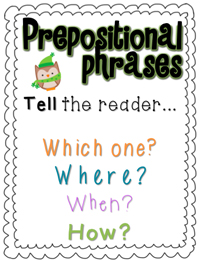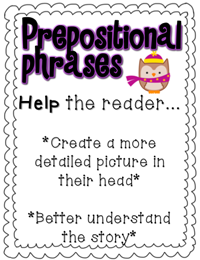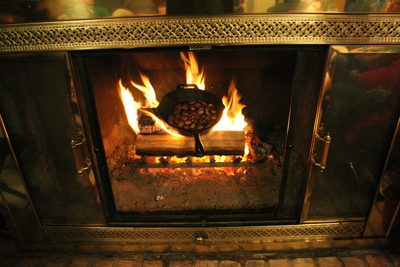
What is a prepositional phrase?

 |
|
 |
|
|
|
| IN (the) bed* the bedroom the car (the) class* the library* school* |
AT class* home the library* the office school* work |
ON the bed* the ceiling the floor the horse the plane the train |
NO PREPOSITION downstairs downtown inside outside upstairs uptown |
| NOUNS and PREPOSITIONS | ADJECTIVES and PREPOSITIONS | VERBS and PREPOSITIONS |
| approval of awareness of belief in concern for confusion about desire for fondness for grasp of hatred of |
hope for interest in love of need for participation in reason for respect for success in understanding of |
afraid of angry at aware of capable of careless about familiar with fond of happy about interested in |
jealous of made of married to proud of similar to sorry for sure of tired of worried about |
apologize for ask about ask for belong to bring up care for find out give up grow up look for |
look forward to look up make up pay for prepare for study for talk about think about trust in work for worry about |
|
Below is The Christmas Song with the prepositions highlighted in blue and the phrases underlined:
The Christmas Song (Chestnuts Roasting on an Open Fire) Mel Torme, 1946) Chestnuts roasting on an open fire Jack Frost nipping at your nose Yule-tide carols being sung by a choir And folks dressed up like Eskimos. Everybody knows a turkey And some mistletoe Help to make the season bright Tiny tots with their eyes all aglow Will find it hard to sleep tonight. They know that Santa's on his way He's loaded lots of toys And goodies on his sleigh And every mother's child is gonna spy To see if reindeer Really know how to fly. And so I'm offering this simple phrase To kids from one to ninety-two Although it's been said Many times, many ways Merry Christmas to you. |
 |
| Objectives | Presentation | Attention | Co-construct | Extension |
Home/Table of Contents | Glossary |